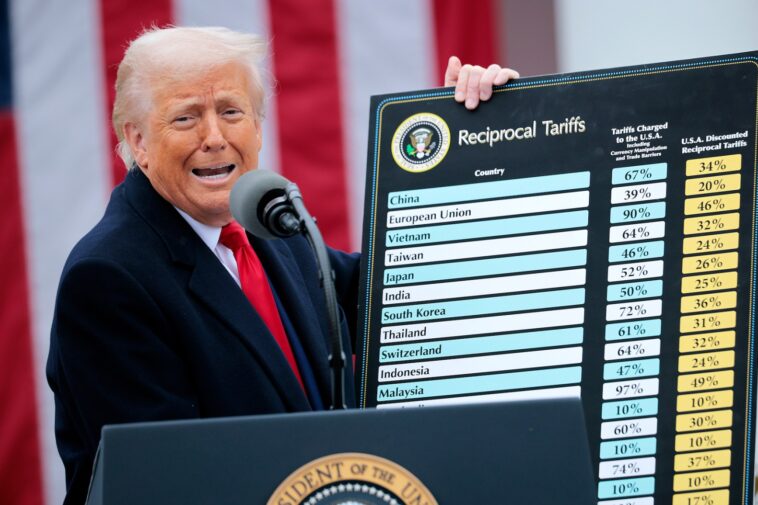On Saturday, former President Donald Trump unveiled his intention to levy a 30% tariff on goods from Mexico and the European Union (EU), taking effect from August 1. This declaration follows unsuccessful attempts at concluding all-encompassing trade agreements with these key partners of the United States. This decision to hike tariffs has only intensified the ongoing trade tensions, causing tremendous upset among U.S. allies and raising concerns among investors.
Notably, Trump made his announcement of the imminent tariffs individually to Ursula von der Leyen, the chief of the European Commission, and Claudia Sheinbaum, the President of Mexico. This latest move by Trump has been severely criticized by both Mexico and the EU; they claim these tariffs to be unjust and disruptive.
Both entities, Mexico and the EU, have expressed their intention to strive for a more comprehensive trade agreement before the proposed deadline. They are some of the largest trading collaborators of the United States, and their responses express a strong resolve to manage this situation in an attempt to lower the proposed tariffs.
Trump’s decision did not stop with Mexico and the EU. Earlier this week, he penned similar letters of intent to 23 other trading counterparts of the U.S., which include countries like Canada, Japan, and Brazil. These territories were informed of the U.S. government’s intention to establish tariff rates ranging from 20% to 50%, and even a hefty 50% levy on copper.
It should also be noted that, according to Trump, the announced 30% tariff is distinct from comprehensive industry tariffs, implying that specific impositions, such as 50% on steel and aluminum imports and a 25% tariff on automobile imports, would continue to persist.
The date of the imposed tariffs, August 1, allows nations adequate time to reach settlements that could potentially decrease the tariffs. Trump made promises back in April to leverage a 90-day postponement to secure multiple new trade deals.
However, till now, the progress on such agreements has been scant, with only Britain, China, and Vietnam agreeing on basic terms. His ambitions of a more extensive agreement join the EU’s existing desire for a comprehensive trade pact that encompasses all 27 member nations.
In his letter to the EU, Trump made it clear that he expected Europe to abolish its tariffs, suggesting this as a pre-requisite for any potential agreements in the future. His words were quite categorical,”,The European Union will allow complete, open Market Access to the United States, with no Tariff being charged to us, in an attempt to reduce the large Trade Deficit,”.
Von der Leyen responded to Trump’s proposal stating that the suggested 30% tariffs would disrupt pivotal transatlantic supply chains, causing harm to businesses, consumers, and patients on both sides of the Atlantic.
Additionally, she emphasized that while the EU is still invested in reaching a workable trade agreement with the U.S, it would also not hesitate to take required steps to protect the interests of its members, such as implementing balanced countermeasures if necessary.

